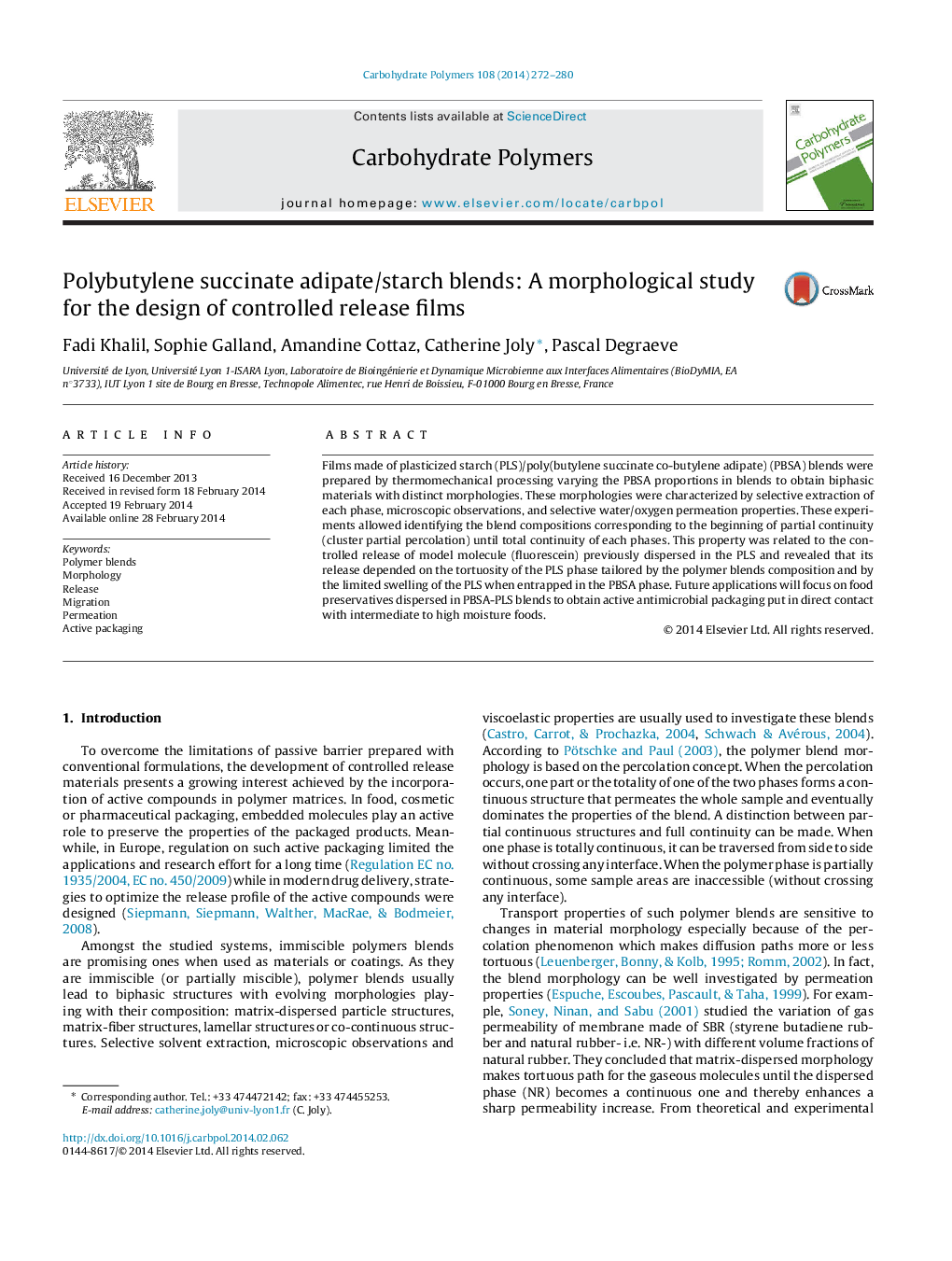| Article ID | Journal | Published Year | Pages | File Type |
|---|---|---|---|---|
| 1375522 | Carbohydrate Polymers | 2014 | 9 Pages |
•Films with distinct morphologies were designed by changing blend composition.•Release was controlled by diffusion path tortuosity.•Release was controlled by limited swelling of the polar polymeric phase.•Applications will focus on dispersion of food preservatives in blends to obtain antimicrobial packaging.
Films made of plasticized starch (PLS)/poly(butylene succinate co-butylene adipate) (PBSA) blends were prepared by thermomechanical processing varying the PBSA proportions in blends to obtain biphasic materials with distinct morphologies. These morphologies were characterized by selective extraction of each phase, microscopic observations, and selective water/oxygen permeation properties. These experiments allowed identifying the blend compositions corresponding to the beginning of partial continuity (cluster partial percolation) until total continuity of each phases. This property was related to the controlled release of model molecule (fluorescein) previously dispersed in the PLS and revealed that its release depended on the tortuosity of the PLS phase tailored by the polymer blends composition and by the limited swelling of the PLS when entrapped in the PBSA phase. Future applications will focus on food preservatives dispersed in PBSA-PLS blends to obtain active antimicrobial packaging put in direct contact with intermediate to high moisture foods.
